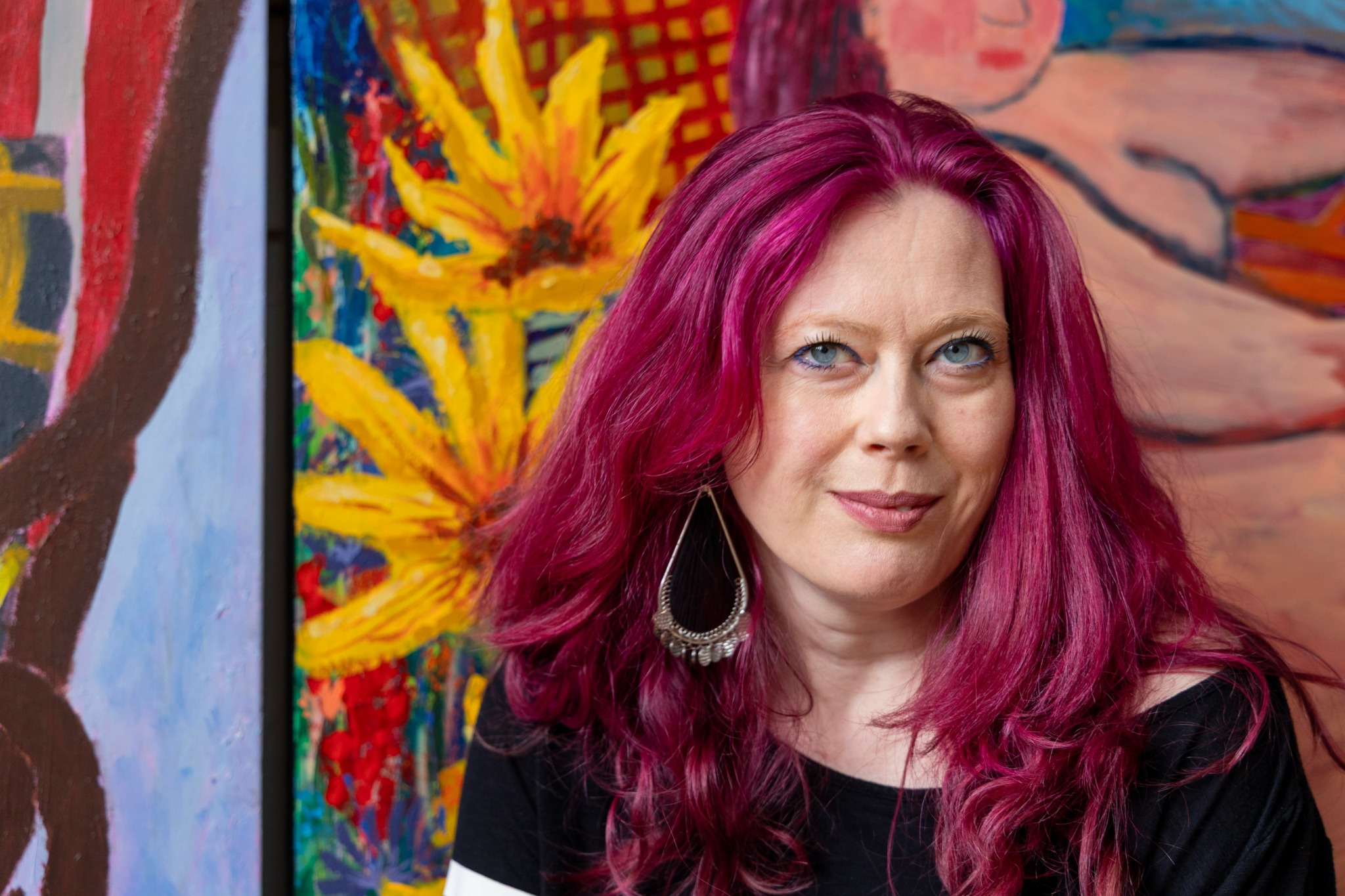We’re excited to introduce you to the always interesting and insightful Elinor Trier. We hope you’ll enjoy our conversation with Elinor below.
Elinor, looking forward to hearing all of your stories today. Do you feel you or your work has ever been misunderstood or mischaracterized? If so, tell us the story and how/why it happened and if there are any interesting learnings or insights you took from the experience?
For most of my life, I was completely misunderstood, not only by other people, but also by myself. I was the ‘difficult’ child, the ‘oversensitive’ one, the person who was either ‘too much’ or ‘not enough’ – sometimes simultaneously!
I spent decades thinking there was something fundamentally wrong with me. I’d mask constantly, trying to be a version of myself that others would find acceptable. It was utterly exhausting.
When I was finally diagnosed as autistic and ADHD in my thirties, everything suddenly made sense. I wasn’t broken or difficult or rude – my brain just works differently. In fact, there was nothing ‘wrong’ with me at all, I was just living in world that is set up for a different neurotype. All those years of feeling like I was reading from completely different script was just my neurodivergence.
Now I make work specifically for the people who feel misunderstood. Everything I do is in service to the celebration of ‘otherness’, and I want the world to know that difference is a joyful thing, not something to be feared or denigrated.
The most beautiful thing is watching people connect with my work and realise they’re not alone. When someone sees themselves in my art and says ‘OMG me too,’ that’s the deepest kind of recognition, for them and for me.


Awesome – so before we get into the rest of our questions, can you briefly introduce yourself to our readers.
I’m a multi-disciplinary artist and writer who creates art that celebrates otherness for anyone who feels out of step with the world.
At the tender age of 6 I started my very first art business. It was called Art Cloud and it sold painted rocks and sticks. However, being that we lived in a lonely cottage on top of the moors in almost total isolation, very few customers ever stopped to buy a rock, and Art Cloud folded after about a week.
But the damage was done, the seeds sown. Exchanging art for money seemed like a glittering jewel in the crown of my burgeoning prospective portfolio career (I already had my heart set on being a stripper, a showjumper, and a farmer).
Despite this early start, I didn’t get the chance to be an artist in public until many years later. The breakthrough came in the early 2010s through The Gratitude Project – a weekly blog where I created hand-lettered illustrations accompanying thank you letters to people who’d impacted my life. Within months, it exploded online, leading to a book, a solo exhibition, and suddenly everyone wanting my drawings. I thought I’d made it.
But here’s the thing about dreams coming true – sometimes they’re not quite what you expected. I was creating to other people’s specifications, my hourly rate was pitiful, and my personal art practice completely dried up. By 2018, I was so burnt out I could barely see straight. So I did something radical and shut it all down to reclaim art just for myself.
These days I only create the art I’m called to create. I’m AuDHD (autistic with ADHD), and I use my neurodivergence as a lens to explore what it means to be human, making vibrant, textural pieces that alchemise difficult experiences into beauty and joy. My collections include Je Suis Wibbly-Wobbly, which explores the multiplicity of identity, The Flourishing, which is about emerging from darkness and trauma, and Tussie Mussie, which uses the Victorian language of flowers to explore alexithymia and express complex emotions.
What sets me apart is my willingness to be completely myself, and that has led to a radical departure from conventional expectations. I don’t use social media to promote my art, instead I’ve created my own digital ecosystem called Zuzu’s Haus of Cats, and focus entirely on building genuine relationships with my community and collectors as individuals.
My website is designed to be a sort of digital third space – somewhere you can go instead of Instagram or Substack, and wander through my digital garden. People have told me it feels healing; like a safe space where they are free to be themselves, and they come to spend time there when they’re having a bad day. Honestly, that means more to me than anything.
My mission is building community for misfits, freaks, and weirdos – and I mean that in the most loving way possible. I believe there’s incredible power in helping people to imagine a future where we are all accepted for who we are.
There are a number of ways to engage with my work. I have a weekly newsletter where I share my studio practice as well as cultural curation. If you want to be come a collector original paintings range from small accessible works to larger statement pieces, and there are also prints, books, zines and occasional events and experiential offerings. I also offer a patronage system where people can donate one off or monthly amounts in order to support the development of larger, more experimental projects in my practice.
What I want people to know is this: if you’ve ever felt like you don’t quite fit anywhere, if you’ve been told you’re ‘too sensitive’ or ‘too intense,’ if you’re neurodivergent, queer, or just different – my work is for you.
I’m not trying to be the artist for everyone – I’m trying to be the perfect artist for the people who need exactly what I’m creating. There’s this beautiful symbiosis that happens when a piece of art meets the right person, and that’s what I’m creating – those moments of perfect recognition and connection.
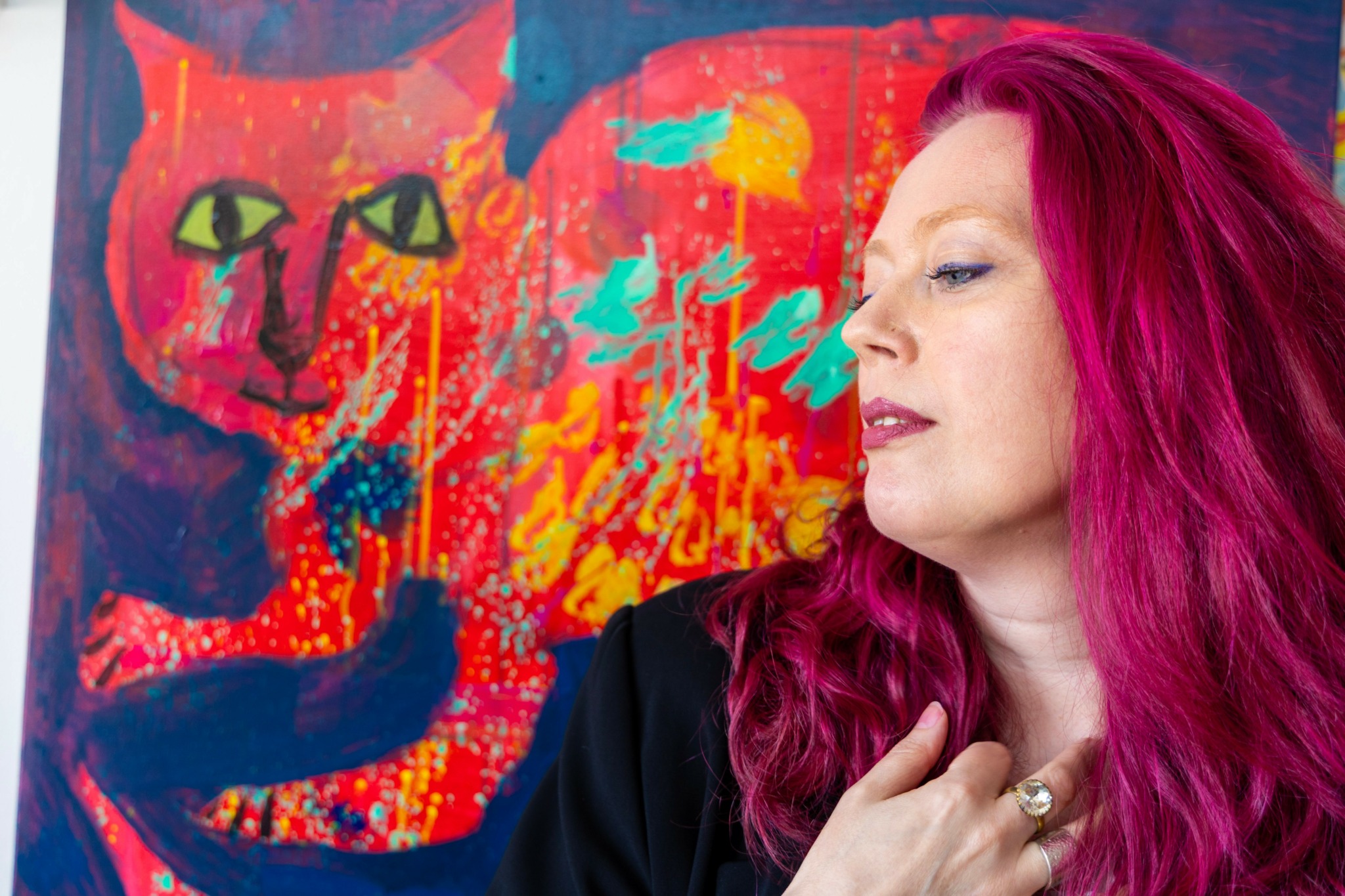
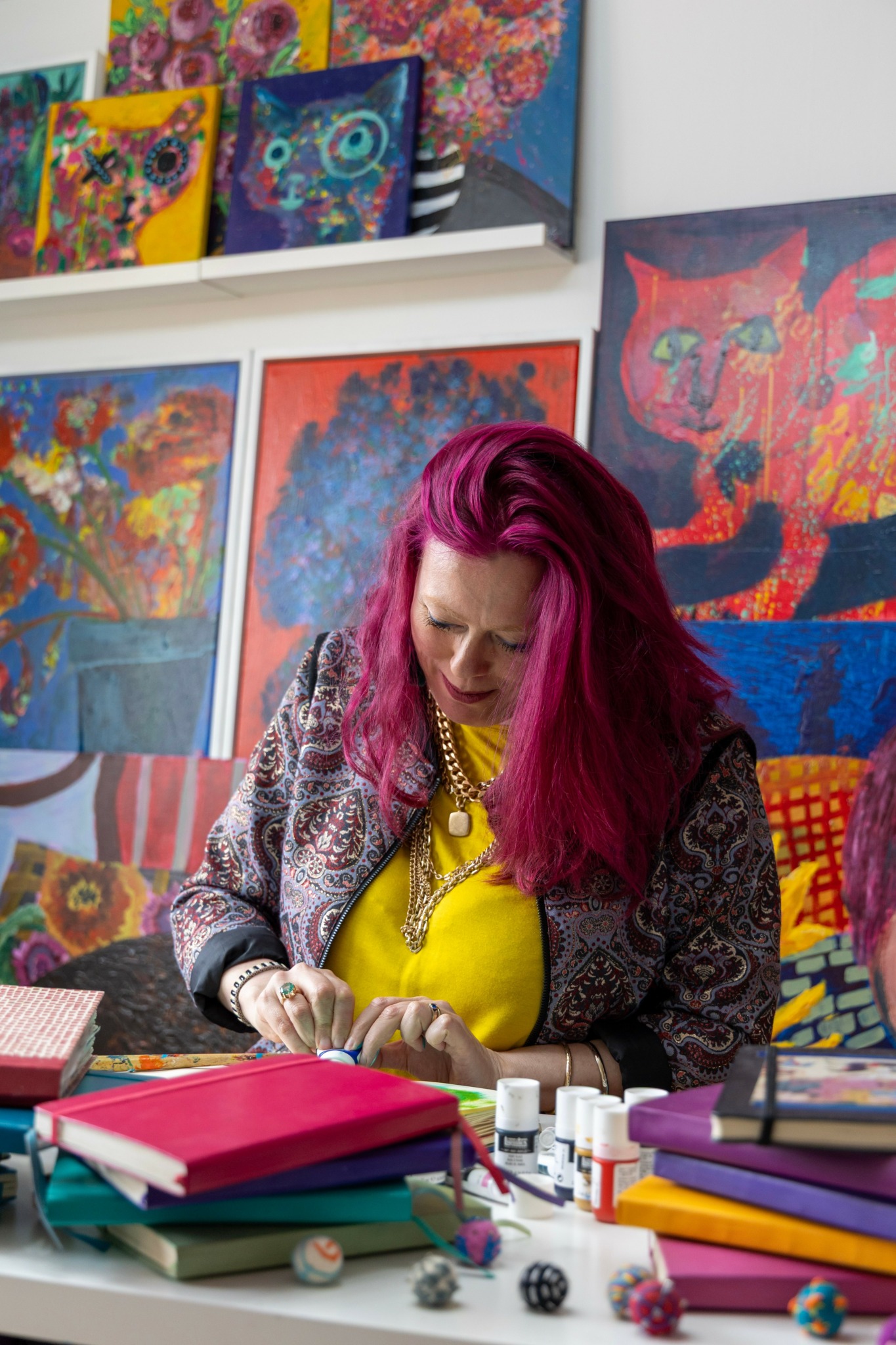
What’s the most rewarding aspect of being a creative in your experience?
It’s those moments when someone sees my work and says ‘This feels like you made it just for me.’ When someone autistic sees my work on the excruciation of being perceived (I Feel Your Eyes On Me Like Beetles) and feels represented for the first time. When someone who’s been through trauma connects with my Flourishing collection and it gives them hope that they can also find joy again.
Art has this incredible power to make people feel less alone, to feel connected across time and space and experience. My work deals with neurodivergence, queerness, trauma, transformation – all these things that can make you feel like an outsider. But when art meets the right person, suddenly you’re not weird or broken, you’re part of something beautiful, and not only that, but there’s a whole community of us out here!
I love that my work – not only my artwork, but also my marketing: my website and my newsletter – gets responses from people saying, “This is so healing.”, “This feels like a safe space for me.” That’s the magic – taking something that feels isolating and transforming it into connection.
Plus, there’s the pure joy in the making itself. When I’m painting and everything just flows, when I can lose myself in colour, and the sensory pleasure of creating – that’s when I know I’m exactly where I’m supposed to be.
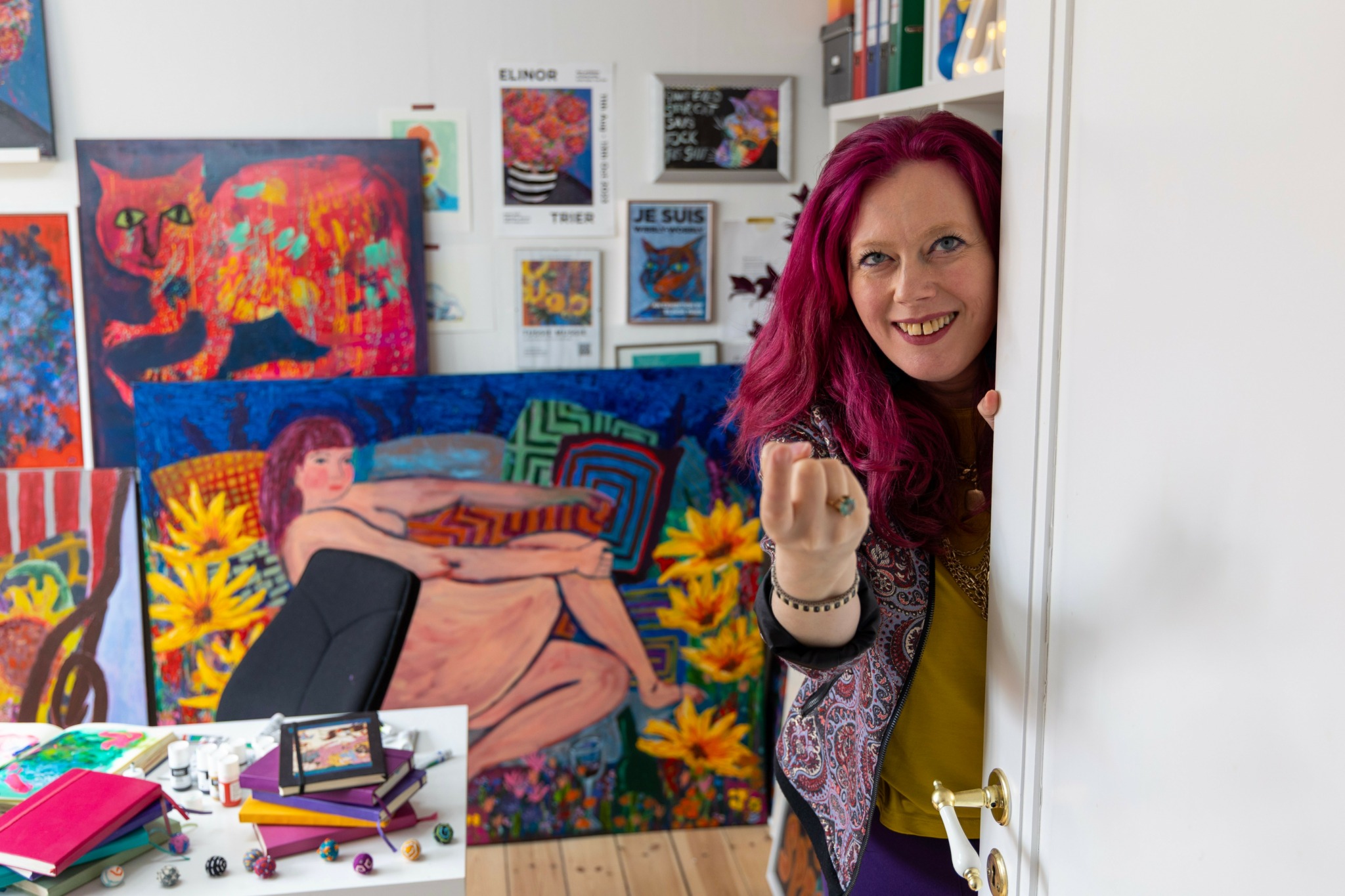
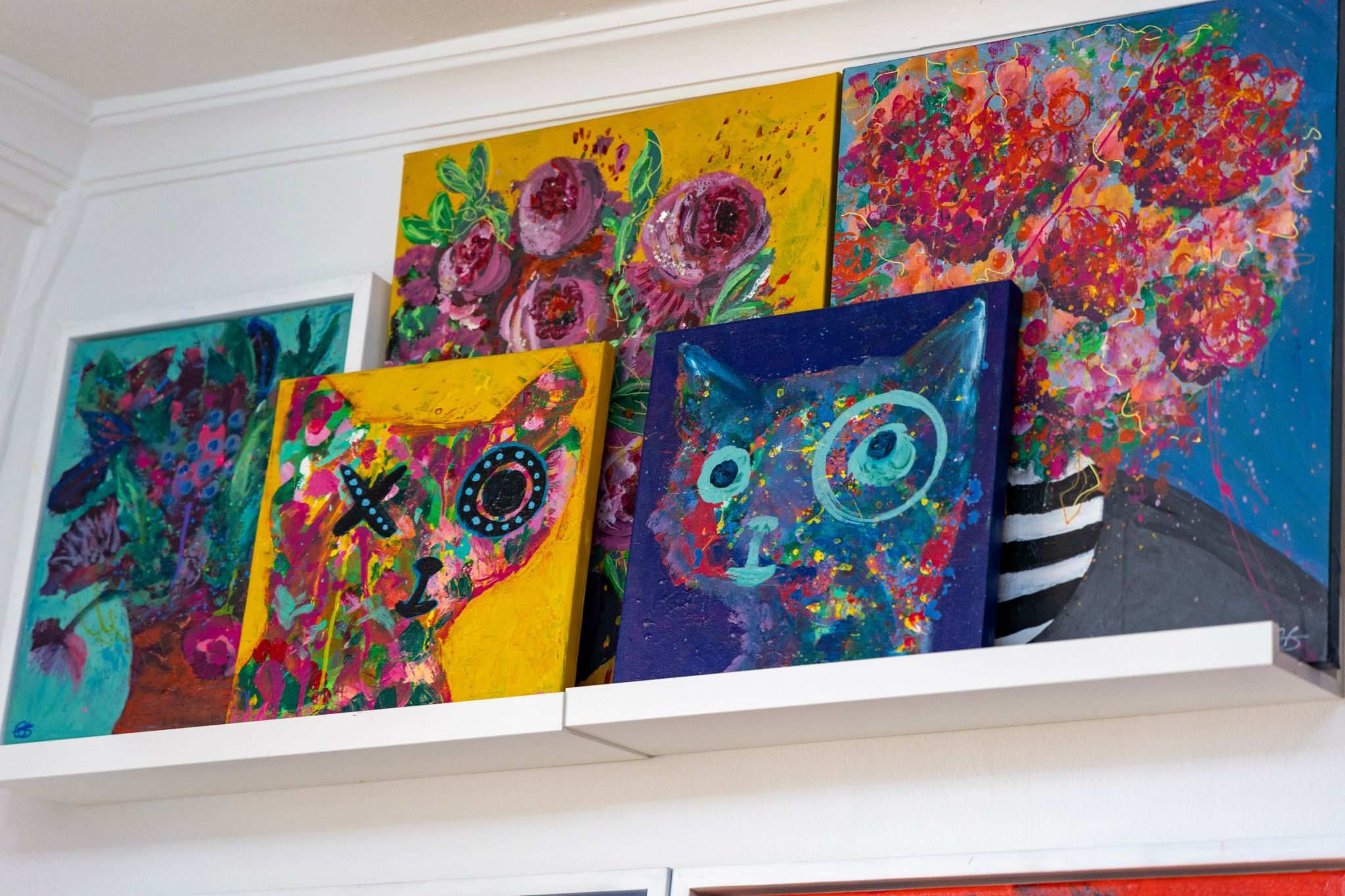
In your view, what can society to do to best support artists, creatives and a thriving creative ecosystem?
Capitalism and art are poor bedfellows, but there are things that can be done to ease the burden on artists. Stop treating us like we should be grateful for exposure and start recognising that creative work is labour that deserves fair compensation.
We need to normalise neurodivergent ways of working and being creative. So much of the world is designed for neurotypical brains and bodies, and when it comes to toxic ideas about constant productivity, no one is served by that! When we create more inclusive spaces and ways of being, everybody benefits.
We need more financial support for artists. Grants and funding are a good idea in theory, but really some kind of universal basic income is the only way forward. It takes time to create great art, and a lot of that is seemingly unproductive time – thinking and dreaming and composting ideas. It’s big work, and it’s also culturally important work. Artists (and I mean that in the broadest possible sense) literally create our culture and shape the world we live in. It’s hard to do that well when you’re worried about paying the rent!
On an individual level, pay artists properly, buy work directly from creators, and understand that when you support an artist, you’re supporting an entire ecosystem of ideas and cultural conversation.
Contact Info:
- Website: https://zuzushausofcats.com/
- Other: My weekly newsletter: https://zuzushausofcats.com/keepintouch
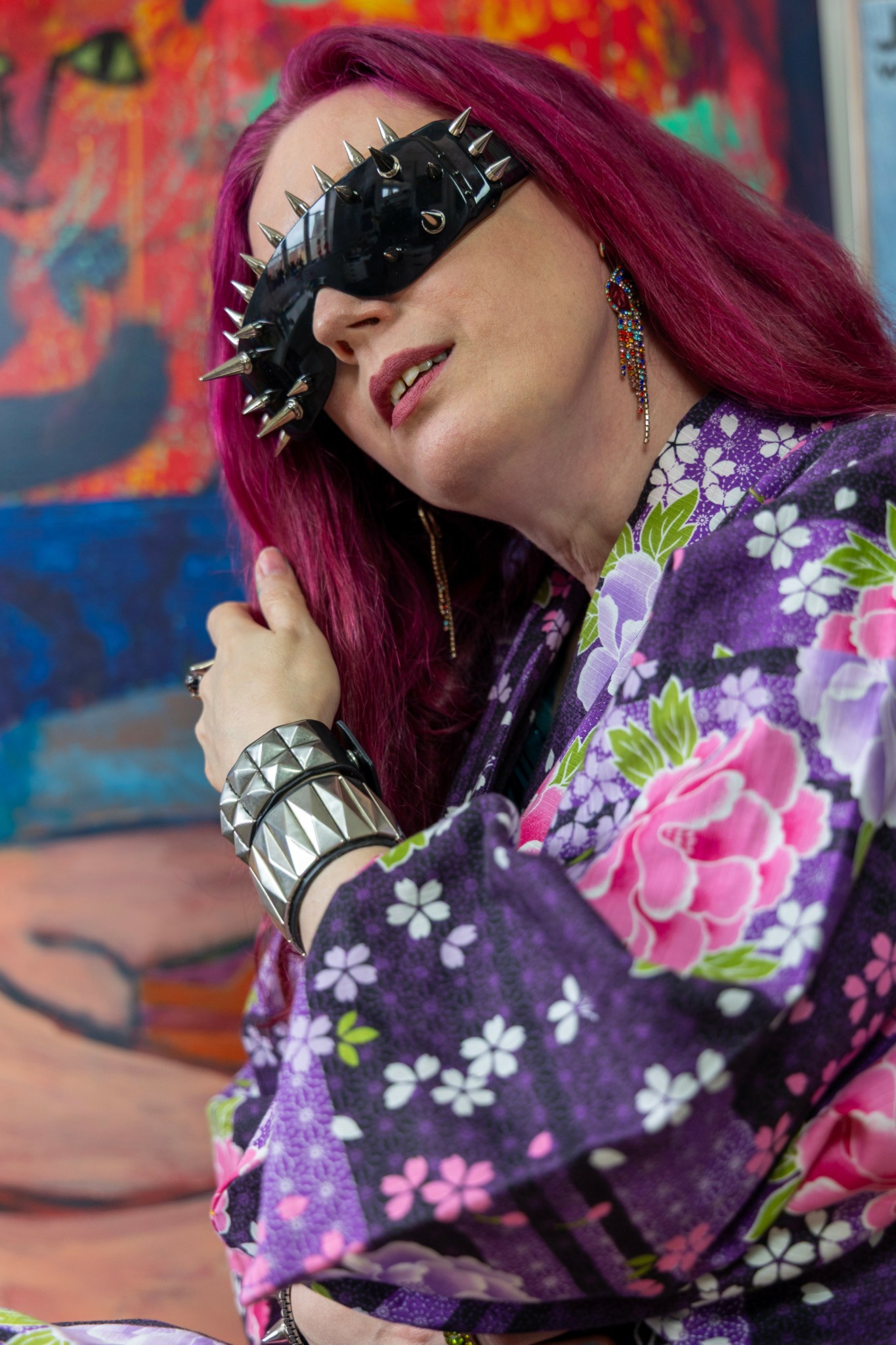

Image Credits
Lars Molgard


